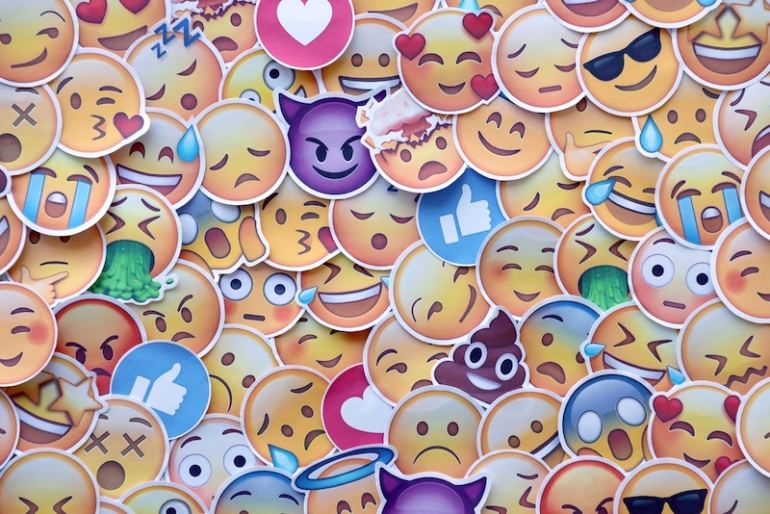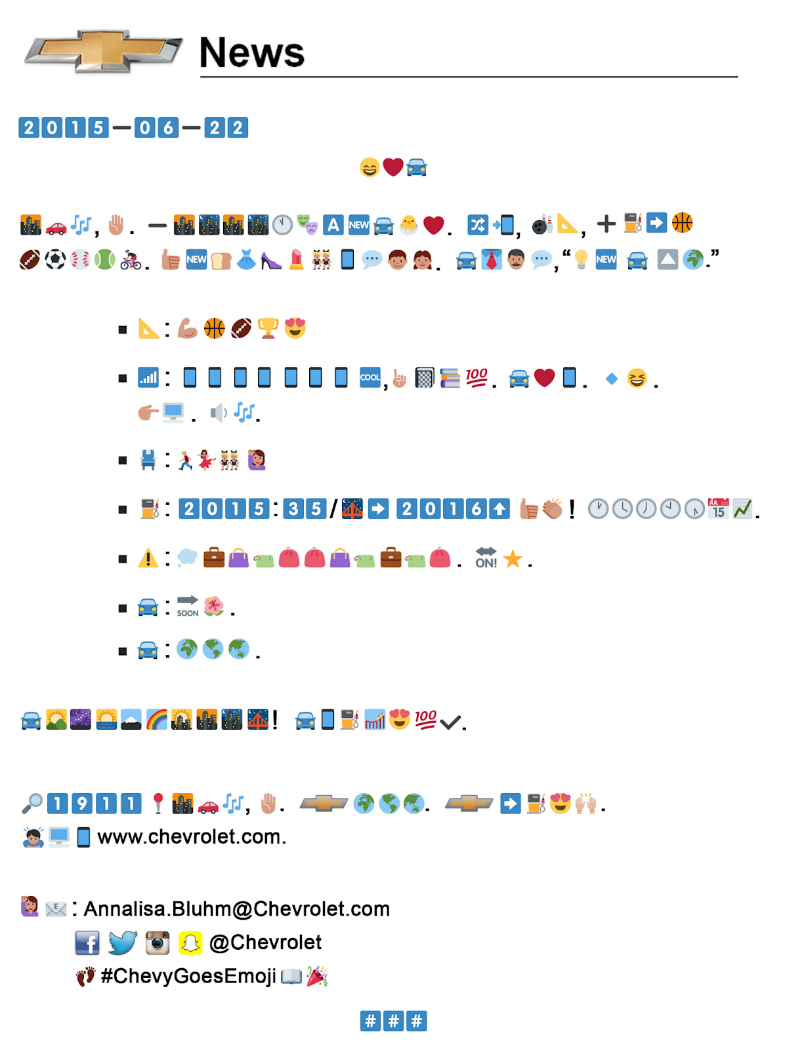
Levelling Up with Emojis for B2B Marketing
The emergence of online communication has given rise to a distinct language: emojis. While B2C brands have readily embraced this trend, using emojis extensively in their social media content, emojis have expanded beyond their initial boundaries. They have transformed into a universal language that transcends geographical and demographic constraints. Their exceptional ability to convey emotions, simplify intricate concepts, and infuse a human touch into digital interactions is undeniable. However, the question remains: Can these small symbols find a place in the realm of B2B, an arena often characterized by formality and professionalism? The answer lies in striking a delicate balance between maintaining professionalism and fostering relatability.
As we delve into the realm of B2B emoji usage, we will explore how these dynamic symbols can enrich your marketing efforts. From creating captivating email subject lines to encouraging engagement in social media posts, we will delve into the psychology of emojis and how they elicit emotional responses, ultimately leading to more profound connections with your audience.
Furthermore, we will offer practical insights on when and how to effectively incorporate emojis, ensuring that your B2B communications align with your brand identity and make a lasting impact. By the end of this article, you will not only appreciate the value of emojis in your marketing toolkit but also be equipped with the knowledge to utilize them in the competitive landscape of B2B marketing.
Three Advantages of Embracing Emojis:
- Building ✨Emotional Connections✨
Emojis serve as contemporary counterparts to facial expressions and body language, effectively conveying nuances that were once exclusive to in-person conversations. Integrating emojis into your messaging provides visual cues that stir emotional responses. Research indicates that our brains now react to emojis similarly to human faces, making them a crucial tool for humanizing a brand's image and reinforcing connections with audiences. Emojis serve as subtle reminders of the human presence behind a corporation.
- Enhancing Your Content
Written content often runs the risk of appearing mundane, but emojis inject color and emotion even before audiences engage with the material. For long-form content, emojis act as textual signposts, breaking down text into digestible sections, guiding readers, and highlighting critical keywords. This approach is especially effective on social media platforms, where engagement is driven more by entertainment value than information collection.
- Boosting Marketing Effectiveness
Regardless of the content, emojis can instantly create a relatable connection. According to a recent Adweek survey, 58% of respondents are willing to open emails featuring emojis in the subject line, while 64% express a strong interest in emails that include their favorite emojis. Furthermore, incorporating emojis into push notifications results in an 85% increase in open rates, with emoji users being 60% more likely to engage with brands using these expressive symbols. Given these benefits, it's no surprise that many businesses are integrating emojis into their brand communication strategies.
Emojis In the B2B Context
Does the use of emojis offer advantages in the realm of B2B marketing? According to a survey involving 1,000 Americans, 76% are already integrating emojis into their professional communications. The conventional expectation of maintaining a formal and neutral tone in workplace discussions is evolving, with emojis now becoming an integral part of digital interactions. Omitting emojis from our messages can unintentionally convey an air of rudeness or excessive seriousness when connecting with colleagues, clients, and partners.
Efforts to infuse warmth into professional conversations have proven to be fruitful, as research indicates that including emojis in email, subject lines can result in a 43% increase in open rates. This trend is even more pronounced in industries known for their conservative nature, with the Business and Finance sector experiencing a remarkable 128% surge in open rates when emojis are incorporated into push notifications. Similarly, sectors like utilities, services, and retail have also reaped benefits from this approach.
However, it's crucial to recognize that success is not guaranteed across all industries. In fact, employing emojis can lead to a significant decrease in click-through rates within sectors like entertainment, events, travel, and hospitality. This serves as a reminder for brands to exercise caution when implementing emoji-based marketing strategies.
Use Emojis Strategically
- Generational differences
Much like any language in marketing, the use of emojis must cater to your audience's preferences. Different generations interpret emojis differently. Consumer research from Brandwatch reveals a divergence in emoji usage across generations. Baby Boomers and Gen X tend to use emojis related to happiness and gratitude, while Gen Y and Gen Z employ a more diverse range of emojis. Interestingly, ❤️ and other heart symbols are frequently used across all generations.
It's important to note that while emojis can help brands connect with their audience, they should remember their targeted demographic and not blindly incorporate Gen Y and Gen Z's language into their marketing and communication strategy. Therefore, precautions are necessary when crafting emoji-filled messages for different target audiences.
- Slang and cultural considerations
Despite sharing a common set of symbols, emojis can be interpreted differently across cultures. Due to globalization and digitalization, there's a general consensus on emoji use, but variations still exist among various cultural backgrounds. Understanding how your target regions interpret emojis is crucial for transnational or global brands. Always research possible connotations for emojis before using them to avoid potential image crises for your brand.
- When and how to use emojis
It's essential not to overuse emojis. Emojis are meant to enhance your text and can convey simple messages on their own. Relying solely on emojis to deliver brand messages can be risky. Furthermore, since emojis are a significant part of chat culture, they can negatively impact important messages. In cases of severe communication crises, adding emojis to official statements can confuse audiences and diminish their perception of your ability to communicate effectively. A notable example of misused emojis is Chevrolet's decision to release a press statement in emoji language for their #ChevyGoesEmoji campaign;
Image: Chevrolet
While they provided a follow-up tutorial with decoding materials for their symbol map, the concept compromised the critical aspects of a press release: providing straightforward and accessible information. Chevrolet's failure stemmed largely from a lack of understanding of consumer behavior and inadequate audience research. Just because emojis are more commonly used doesn't mean that everyone can comprehend and is willing to decipher a page full of emojis.
- Test for long-term impact
Creating a well-crafted emoji marketing campaign is essential for achieving better results. Do your audiences respond better to sarcastic emojis or celebratory emojis? Do posts using emojis as bullet points result in higher click-through rates? Which emojis do your Threads audiences engage with the most? Answer these questions through A/B testing and use the data to determine the most effective strategies for your emoji campaign, including selecting a set of brand-related emojis, preferred frequency, and format.
Integrating emojis into your B2B marketing strategy goes beyond mere playfulness; it's a potent tool for establishing deeper, more human connections with your audience. As you've explored, emojis have the ability to convey emotions, simplify intricate concepts, and boost engagement. By harnessing the expressive and visual capabilities of emojis, you're not only fortifying your brand's communication but also forging more robust bonds with your business partners. So, don't hesitate to include that smiling emoji in your upcoming email or social media post – it could be the key to cultivating more meaningful B2B relationships and propelling the success of your marketing endeavors.



Leave a comment
Make sure you enter all the required information, indicated by an asterisk (*). HTML code is not allowed.